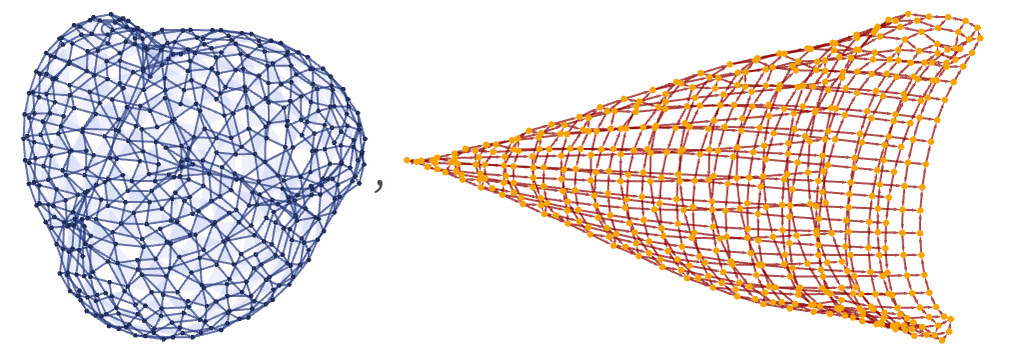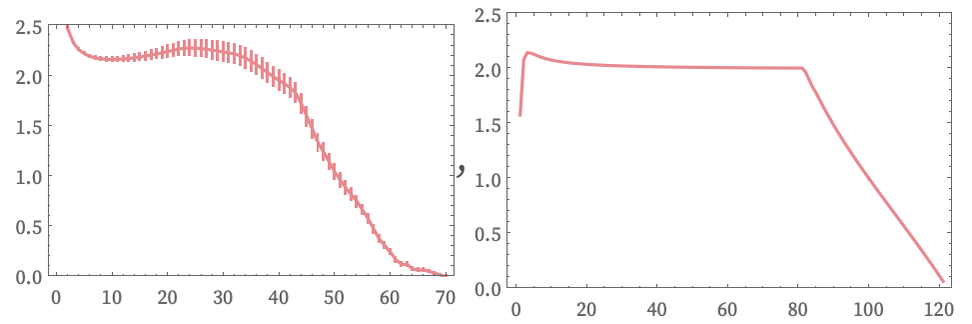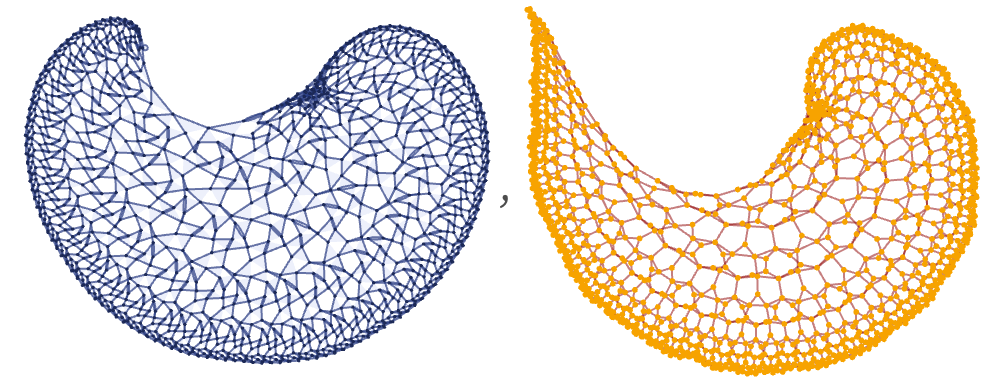In section 5 we used the cone volume Ct to probe the large-scale structure of causal graphs generated by string substitution systems. Now we use Ct to probe the large-scale structure of causal graphs generated by our models.
Consider for example the rule
We found in section 4 that after a few steps, the volumes Vr of balls in the hypergraphs generated by this rule grow roughly like r2.6, suggesting that in the limit the hypergraphs behave like a finite-dimensional space, with dimension ≈2.6.
The pictures below show the log differences in Vr and Ct for this rule after 15 steps of evolution:

The linear increase in this plot implies exponential growth in Ct and indeed we find that for this rule:
This exponential growth—compared with the polynomial growth of Vr—implies that expansion according to this rule is in a sense sufficiently rapid that there is increasing causal disconnection between different parts of the system.
The other three 22 42 globular-hypergraph-generating rules shown in the previous subsection show similar exponential growth in Ct, at least over the number of steps of evolution tested.
A rule such as
whose hypergraph and causal graph (after 500 steps) are respectively

gives the following for the log differences of Vr and Ct after 10,000 steps:

This implies that for this rule the hypergraphs it generates and its causal graph both effectively limit to finite-dimensional spaces, with the hypergraphs having dimension perhaps slightly over 2, and the causal graph having dimension 2.
Consider now the rule:
The hypergraph and causal graph (after 1500 steps) for this rule are respectively:

The log differences of Vr and Ct after 10,000 steps are then:

Both suggest limiting spaces with dimension 2, but with a certain amount of (negative) curvature.
 download pdf
download pdf  ARXIV
ARXIV peer review
peer review